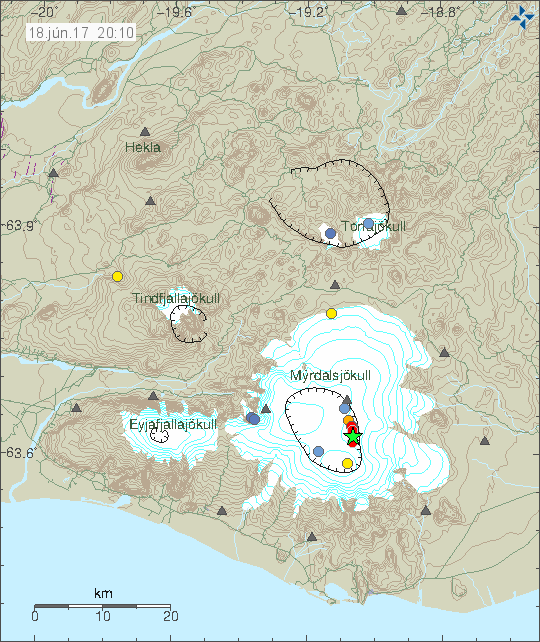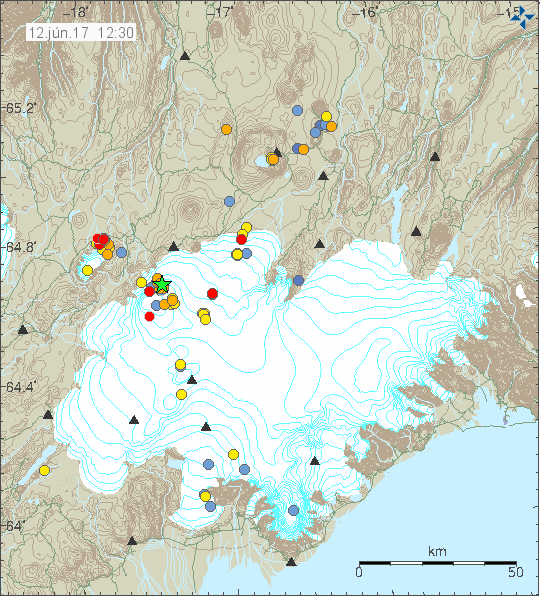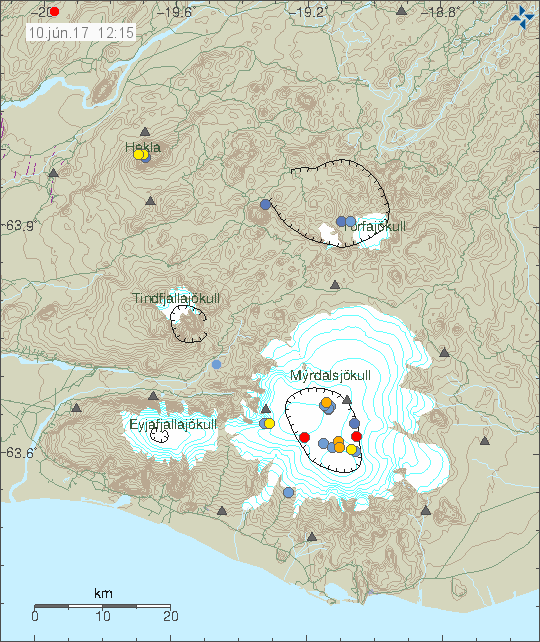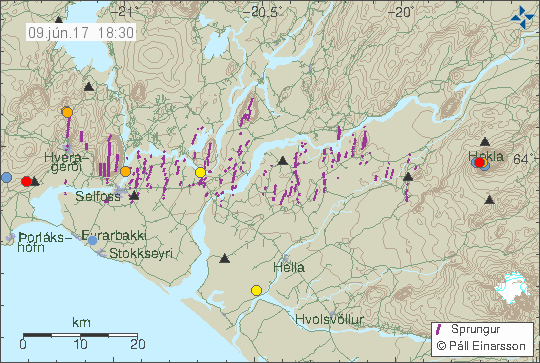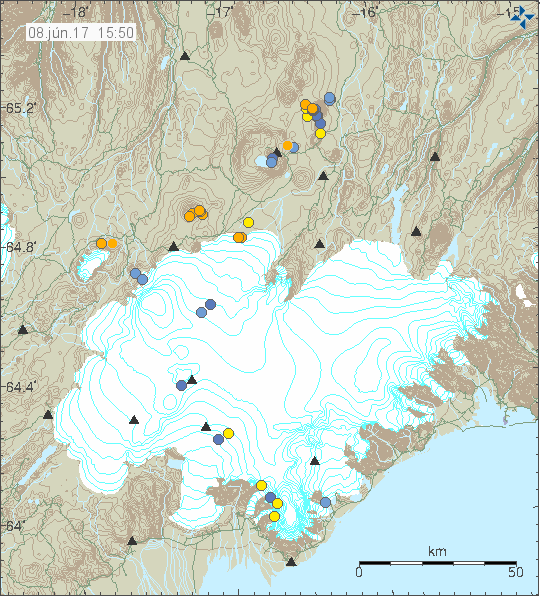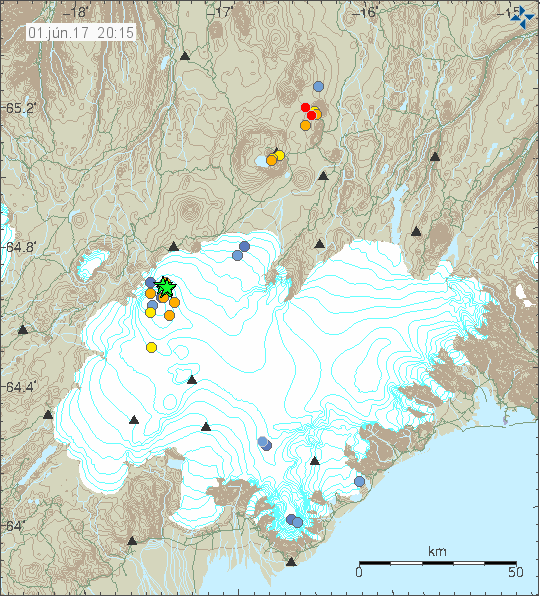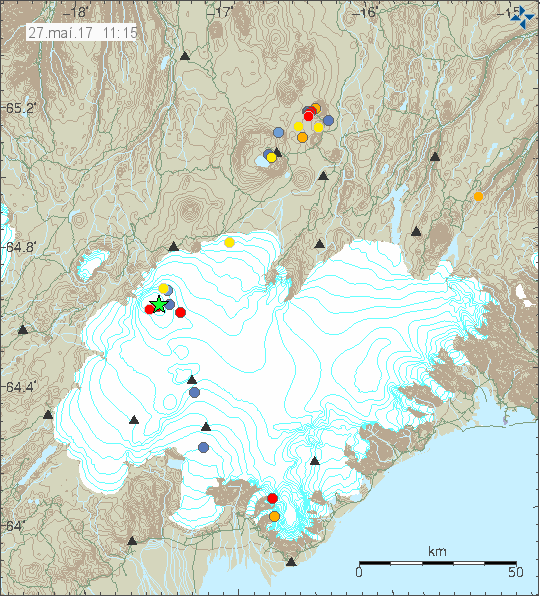Tonight (20-June-2017) there has been a sharp increase in earthquake activity in Katla volcano. Largest earthquake so far had the magnitude of 3,6. At the moment I’m not sure about other earthquakes magnitudes. I’ll update this article once I have them. The current situation seems be less stable than it appears (based on IMO notice earlier this evening).

Current earthquake activity in Katla volcano. Copyright of this image belongs to Icelandic Met Office.
The harmonic tremor plots have not yet updated for the area around Katla volcano. They update only once every 30 minutes that leaves me currently without any harmonic tremor data at the moment. I’ll post an update once I have those updates.
At the writing of this article an eruption has not yet started. That might change without warning.
This article is going to get update or a new written as this situation develops.
Update 1
Activity in Katla volcano has gone back to background levels in the last few hours. This is the second earthquake swarm in Katla volcano in the last two days, the last one being on the 19-June-2017. Nothing unusual is appearing on the harmonic tremor plots at the moment.
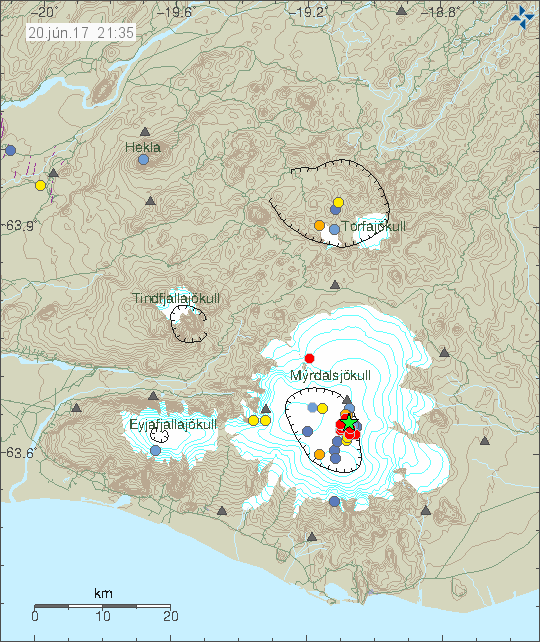
The earthquake activity in Katla volcano at 21:35 UTC. Copyright of this image belongs to Icelandic Met Office.

The main earthquake so far with magnitude 3,6. This image is filtered at 1Hz due to wind noise. This image is released under Creative Commons Licence. Please see CC Licence page for more details.
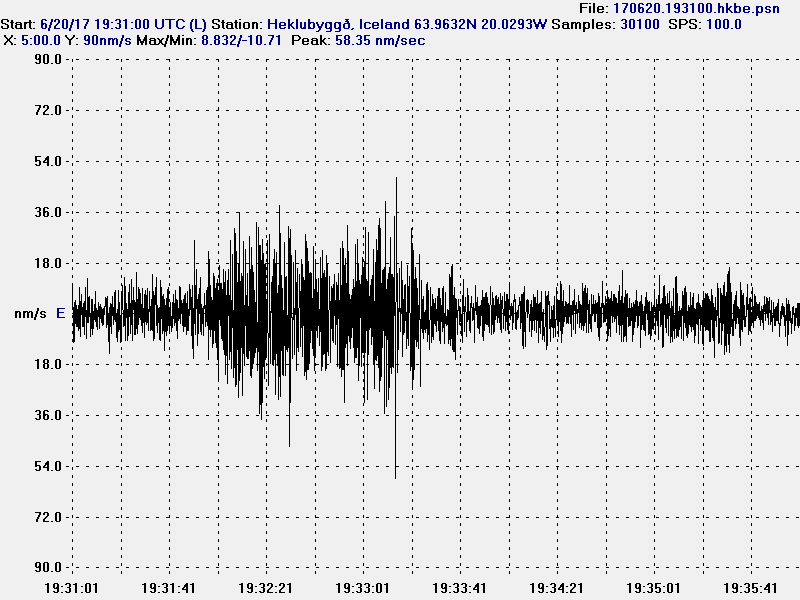
The second earthquake activity. It is strange to look at on this plot. Seems to be one long continuous earthquake until it drops off. This image is released under Creative Commons Licence. Please see CC Licence page for more details.
Currently there are strong wind in south Iceland making it difficult for me to monitor Katla volcano due to wind and ocean wave noise.
This article was updated at 21:45 UTC.

